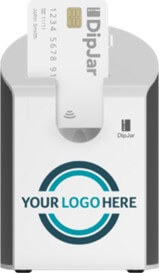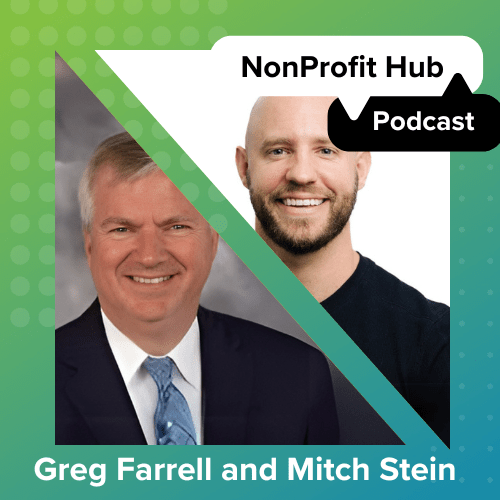Enjoy this spotlighted blog from DipJar
If only fundraising was as easy as “just” asking for money, right? Of course, when thinking about successful fundraising and building donor relationships, there’s a lot more to it. We chatted with Tiffany Allen, founder & creator of Boss on a Budget, to talk about the do’s and don’ts when trying to raise more money.
Do: Know the Importance of the Donor Relationship
Communication, communication, communication. We can’t emphasize enough how important communication is when it comes to building a positive relationship with your donors in order to raise more money. How and when you communicate as well as your style of communication all matter. The first step to improve your communication and your donor relations is to separate your donors into three audiences:
- New Donors: Donors who have made less than two donations to your organization
- Current/Active Donors: These are donors who regularly give or have made at least three donations
- Potential Donors: This audience is comprised of people who have shown interest in your organization or mission but have not made a donation yet, and those who may not even know of your organization
Now that you’ve identified these three audiences, it’s time to talk about how to best communicate with each group.
New Donors
It is imperative to engage them immediately following their donation. Pick up the phone to say “thank you,” send a personalized email, or mail a handwritten note. The key is to engage them as close to the moment of their gift as possible because you already have their attention.
Once you’ve said thank you, invite them to attend a new donor event* so they can meet your staff and other donors. This will help them feel as though being a donor of your organization is like being a part of a community. Additionally, encourage new donors to stay engaged by signing up for your email newsletter, following you on social media, volunteering, and attending your community events or fundraisers.
Current Donors
Regularly communicate with your current donors through email campaigns, social media, events, and phone calls. Invite donors to volunteer with you or attend an event so they can see your work firsthand. Key Note: regular communication doesn’t mean spamming your donors with asks in order to raise more money! Be sure to provide simple updates about what your organization is doing so they regularly see your success.
Potential Donors
When attracting potential donors, you need to break this audience down further based on who you want to target. Your communication style should be different for people who already know about your work and those who have never heard of you. But, for both audiences, education is crucial. You should give these audiences more information about the problem you are working to solve, how your organization is doing that, and why you need their support to do it. Once you do that, invite them to join your email newsletter and follow your social media accounts. In doing this, they will naturally become a part of your community and you can further build the relationship with them. Once you build the foundation, then, and only then, ask them to increase their involvement volunteering or making a donation.
While this outlines a good framework to use for building positive relationships with your donors, it’s important to stay dynamic and flexible. If something isn’t working as well as you hoped, try changing a few things until you get it right!
Do: Be Transparent About Impact
First, define your impact. Your impact should directly relate to your mission and vision statements. Here are some questions to think about to help you define your impact: What challenge or problem is your organization solving? How is it working to solve it? What does it look like if you are successful?
Now that you’ve defined your impact, it’s time to measure it. Not only is measuring impact important for your organization internally, but it will also help you create persuasive marketing communications to share with donors and potential donors. So, how do you measure impact? The Theory of Change model is a great place to start. This model will help you connect what your organization does with your desired goals (your vision). After you define your inputs and activities, begin to collect data and stories about your outputs and outcomes.
Show off the data that proves your organization is effectively making an impact. Use the data and success stories you collect in email newsletters, social media campaigns, grant applications, and annual reports. Not only will your current donors appreciate seeing that their support is resulting in actual change, but this reporting will also give potential donors confidence that your organization is worthy of their support!
Don’t: Jump Right Into the Ask
Not all communication needs to, or should, include an ask. Your donors shouldn’t only hear from your when you want something (to raise more money). Put yourself in your donor’s shoes—how would you feel if the first time you met someone, they asked for your money? Or, if every time you saw someone, they asked you for money? It would be uncomfortable and probably annoying, right?
Instead, build up to making an ask by providing information that will support your eventual ask. Share your impact reports on a regular basis to prove transparency and give donors a tangible result of how their donations are being used. In doing this, you are building good faith with your audience. This helps to create strong donor relationships because it leaves your audience with positive feelings about your organization. Once you have done this, you can make your ask.
Additionally, don’t forget to include other ways that people can support your organization. Offer volunteer opportunities, sell merchandise, host raffles, and encourage your audience to share your organization with their friends and family to increase your audience size.
Don’t: Use a Complicated Donation Process
Always make it easy for someone to donate to your organization. If the donation process is too complicated or long, you will lose their attention and potentially cause frustration. This is especially important with regard to technology and donors who may not be digitally savvy.
Do: Try Innovative Ideas!
Scrap the remittance envelopes! Try to build engagement and activity around your donor’s experience. DipJar was recently highlighted as a Good Find through Nonprofit Hub as it offers an innovative way for donors to give.
With DipJar, the giving process is easy, fun, & memorable. The plug-and-play design means that all you need to do is simply power up and you’re ready for donors to start “dipping.” Even better, donors just need to dip their credit card into the DipJar, then lights, sound, and success! Can’t meet your donors in person? Use SparkVirtual to accept online and mobile donations so your audience can donate from anywhere. Watch this video to see just how easy DipJar is to use.
DipJar is changing the game of fundraising with a cashless donation jar and an integrated payments platform that enable joyful, engaging, and frictionless giving. With DipJar, organizations of any size can collect donations anywhere and Create More Giving Moments. If you have any questions about this post or would like to learn more about DipJar, let us know!








